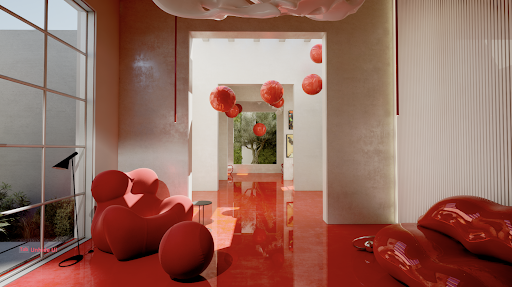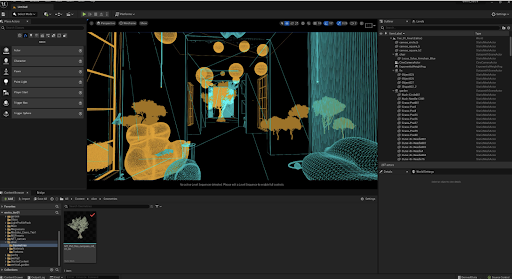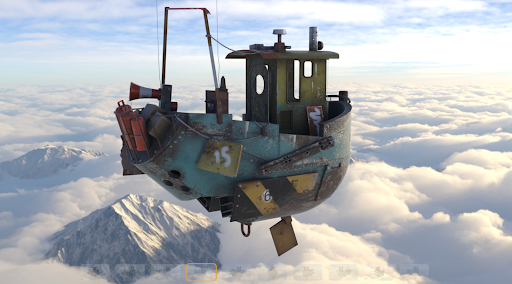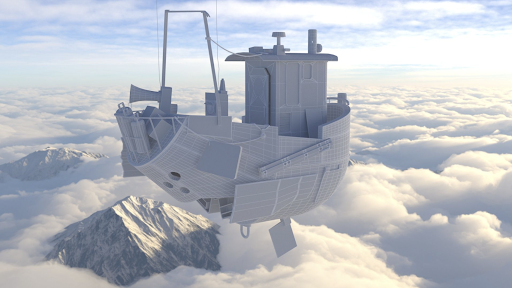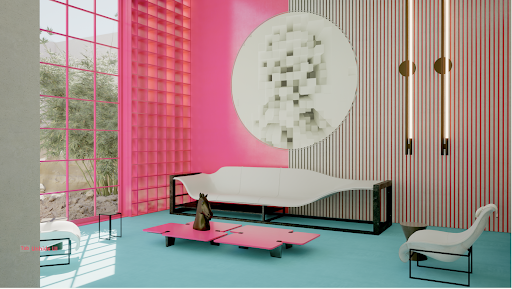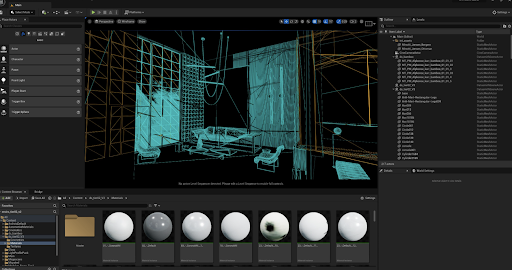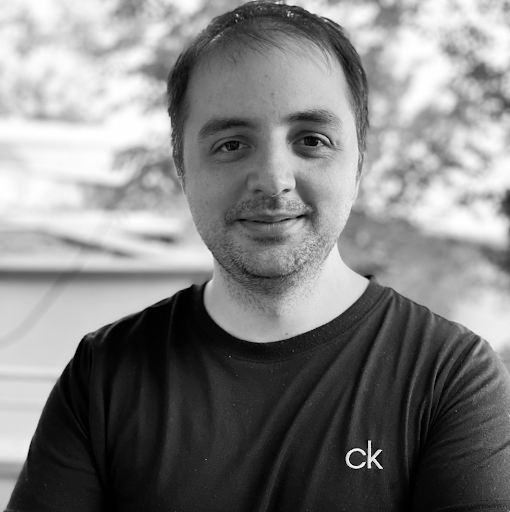After studying to become an architect, LA-based Alexander Tujicov turned his 3D hobby into a career by specializing in stunning architectural visualizations. Now, he’s leveraged the same skills that make for a good arch-viz render to create photo-real environments in the metaverse. We caught up with him to learn more below.
TurboSquid: What makes you passionate about architectural visualization?
Alexander Tujicov: Architectural visualizations were in demand ever since I started my career in 3D. For many years, I enjoyed bringing boring 2D architectural plans to life by turning them into immersive 3D stills that looked photo-real.
Today, the metaverse is bringing the arch-viz industry to a new level as audiences don’t just see your work as a still – they can actually walk through it using AR and VR, too. As more brands get into the metaverse, there’ll soon be even more demand for talented artists with an arch-viz skillset to build 3D worlds.
That means it’s a really exciting time to be in this space, but there’s also a lot of competition in the market and new artists need to be skilled to stand out. Personally, I’d advise having an in-depth knowledge of 3D modeling, texturing, and lighting. The better your expertise in these areas, the easier it will be for you to apply them to real-time applications like Unreal Engine or Unity.
What does a typical day of work look like for you?
I spend a little time checking emails and planning the day’s priorities. Next, I spend the majority of my time looking for inspiration for my next project using platforms like Pinterest. Remember, everything starts with an idea, so don’t ever skip your research phase!
Once I have enough inspiration, the final part of my day involves working on my art. I always try to focus most on composition, light, and color balance, as well as only produce content that I have a real passion for.
I typically start using primitive 3D objects in 3ds Max: Maybe even something as simple as several boxes will help block out my scene. The next step involves adding a camera and light. I use Corona Render in order to get an interactive preview when setting up the light position and camera, then experiment with different looks before deciding on the one I want. If I want to achieve a specific mood using lighting, for instance, I’ll use HDRI maps. Otherwise I’ll use a normal Sun object in most of my work.
Finally, I’ll then add texturing and details to the scene. For this, I typically use Substance Painter, which is designed for exactly this kind of PBR texturing process for games and the metaverse. For the interior scene with red floating spheres, however, I used Quixel materials directly in Unreal Engine instead. Throughout this process, I always aim to get a rough result as soon as possible, which helps me control my final idea without wasting time on unimportant details.
How long have you been using TurboSquid?
I’ve been using TurboSquid since 2009. Since last year, I’ve also been selling some 3D scenes in the sci-fi genre. TurboSquid is an easy-to-use platform for both buyers and sellers.
Can you give us any stats about the models?
A typical scene takes an average of up to five days to complete. Numbers around polygon count and edge topology have become less critical for me: today, there are many solutions that will help you to retopologize your mesh automatically. Some real-time solutions like Nanite (in Unreal Engine 5) can also handle millions of polygons without any issues. In the future, this process will be even more automated and will allow artists to concentrate more on ideas and less on the technical side.
What advice would you give to new artists?
Firstly, remember that 3D software is just a tool, and by itself will not make you a good artist. Secondly, study photography, composition, and color theory. I would suggest taking a basic photography course, which will give you all the necessary basics that you can then apply to your 3D work.
Finally, I’d also recommend getting as many references as possible before starting a project. The more you have, the more realistic your results will be. If you want to create a polished concrete floor material, for instance, try to find a minimum of 10-20 references for how the floor looks like, and how reflections and textures work with the lighting.
What do you wish you’d known about modeling earlier in your career?
I wish I’d known how important it was to follow your passion, rather than simply focusing on gaining financial output from your work. I lost many years doing boring work and working on stuff I didn’t really like because it made me money. I’ve since learned that being passionate about your work can earn you money too, as well as make you happier in the long run.
What do you feel is most exciting about the 3D industry’s future in the metaverse era?
For the last 10-12 years, 3D arch-viz has become more accessible to all thanks to solutions like Lumion. In the future, I believe more architectural companies could offer virtual design services like designing your own apartment in the metaverse. One of the projects I took part in, for instance, is the Enviro gallery: a photorealistic art gallery where you can display your favorite NFTs.
If you’re an artist who is interested in being featured on the TurboSquid blog, email our content team at marketing@turbosquid.com.


